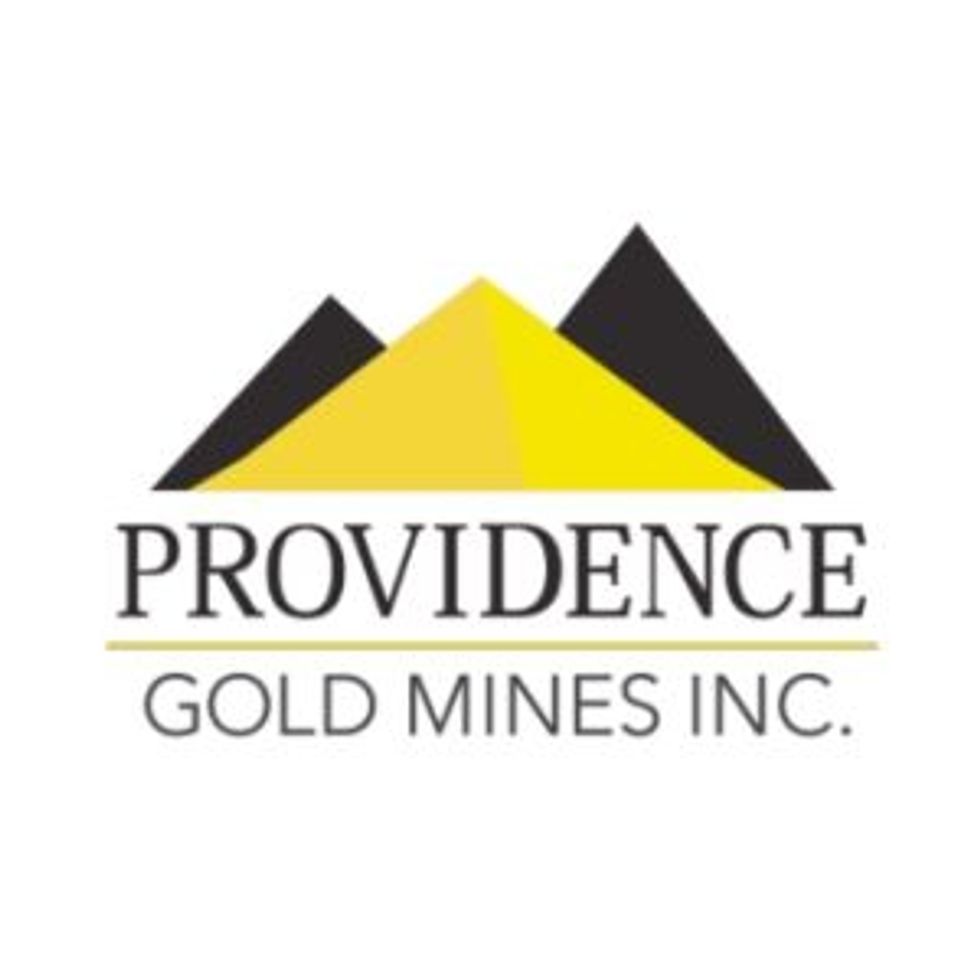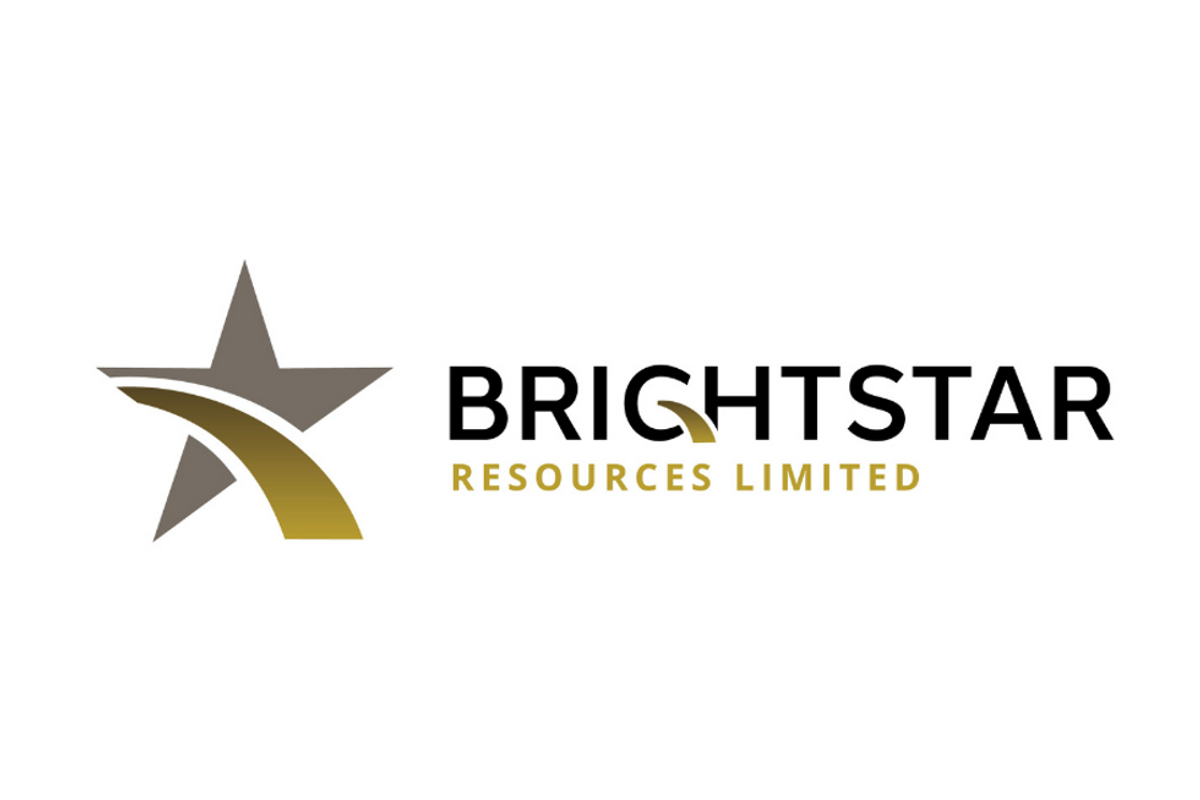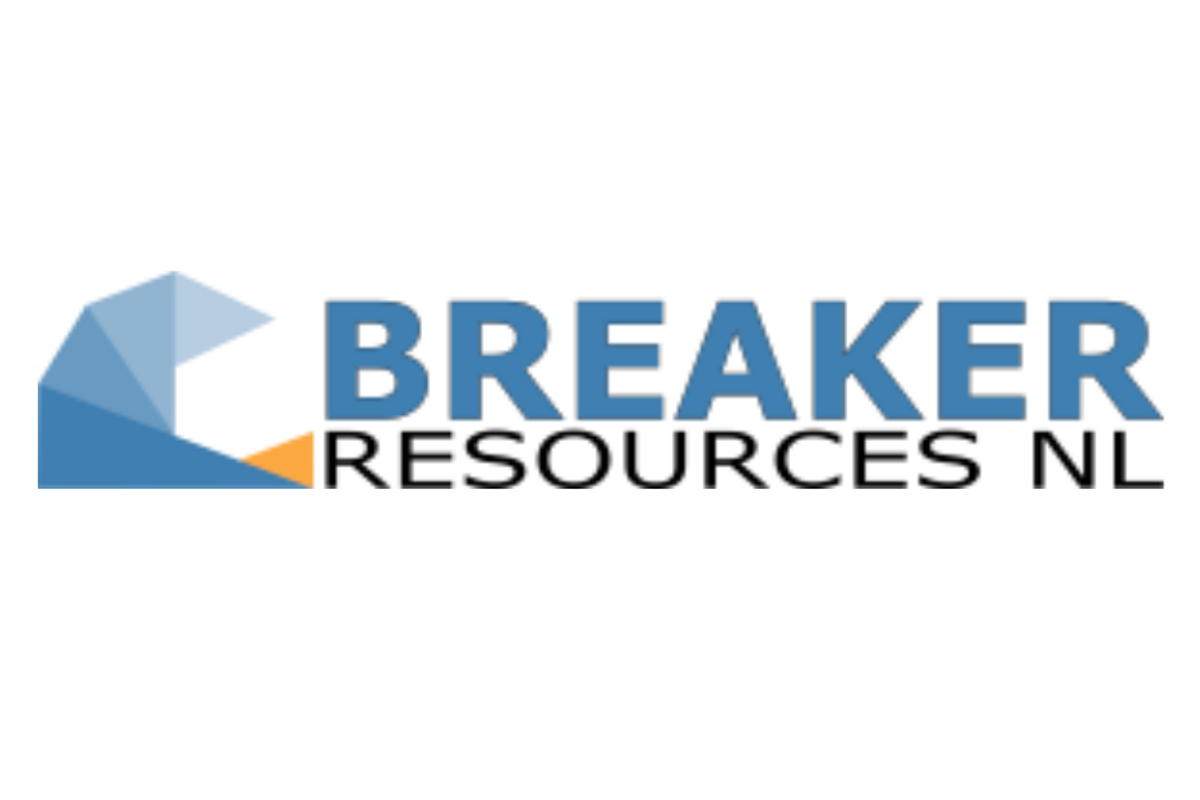
June 16, 2022
Please find attached an ASX release by Global Lithium Resources Limited (GL1) announcing the mobilisation of the drilling contractor to the Manna Lithium deposit, situated within Breaker Resources NL’s 1.7Moz# Lake Roe Gold Project. The diamond drill rig will commence an initial 4,000m drilling program, complementing a 20,000m RC drilling program currently underway.
A maiden Inferred JORC Mineral Resource of 9.9Mt @ 1.14% Li2O and 49 Ta2O5 ppm^ was previously announced on 17 February 2022. The pegmatite system at Manna is open in all directions with several mineralised trends extending over a 5km x 1.5km area.
Breaker retains a 20% free-carried interest in the Manna Lithium Project with Global Lithium carrying all costs and expenditure to completion of a positive bankable feasibility study (BFS). Breaker is also entitled to milestone payments of up to $20 million.
On behalf of the Board of Directors,
For further information on Breaker Resources NL please visit the Company’s website at www.breakerresources.com.au, or contact:
Investors/Shareholders
Tom Sanders
Tel: +61 8 9226 3666
Email: breaker@breakerresources.com.au
About Breaker Resources NL
Breaker Resources NL (ASX: BRB) is unlocking the potential of a new 1.7Moz greenfields gold district discovered in the Kalgoorlie region of Western Australia, the world’s topranked mining jurisdiction.
The operational strategy is to develop a large open pit and underground gold mine while concurrently drilling to keep expanding the rapidly growing Resource. Major shareholders include the Electrum Gold Fund (10%), Paulson and Co (10%) and Franklin Templeton (6%).
The key attributes of the Lake Roe Project are its scale and high-grade mining optionality. Gold at the main deposit starts 5m from surface and occurs over a 150m-wide zone in a 3km-long single pit configuration, part of a 9km-long gold system. High-grade lodes discovered in the last year have confirmed that open pit mining will transition to underground mining.
Free-carried lithium interests situated within the Lake Roe project have the potential to fund a large part of the capital expenditure expected for a standalone development. PFSlevel pre-mining studies to date indicate no impediments to development.
The exciting Ularring Project, situated in the emerging SW Yilgarn mineral province, hosts a known goldcopper system and untested nickel and PGE potential in a large, previously undrilled mafic-ultramafic belt. BRB’s initial drilling is expected to start in the next 1-2 months.
Click here for the full ASX Release
This article includes content from Breaker Resources NL , licensed for the purpose of publishing on Investing News Australia. This article does not constitute financial product advice. It is your responsibility to perform proper due diligence before acting upon any information provided here. Please refer to our full disclaimer here.
BRB:AU
The Conversation (0)
15h
Providence Gold Mines Inc. Options La Dama de Oro Gold Property
Providence Gold Mines Inc. (“Providence” or the “Company”) announces that subject to Regulatory approval it has entered an option agreement to acquire the “La Dama de Oro Gold Property”. The property is a historical gold mine 100% owned by the Optionor, (” Mohave Gold Mining”), a private Company incorporated under the laws of the state of California.
Providence recently commissioned Ethos Geological Inc. of Bozeman MT to complete an NI 43 101 technical report, authored by Zachary Black, SME-RM acting as the Qualified Person under NI 43 101. The NI 43 101 technical report has been submitted for Exchange review and approval. A cautionary note: The property is at an early exploration stage and does not have sufficient data for a mineral resource.
The La Dama de Oro Property is situated in the Silver Mountain Mining District, within the structurally complex Eastern California Shear Zone and the intersection with the San Andreas Fault Zone. Bedrock geology includes Mesozoic quartz monzonite that intrudes the Jurassic Sidewinder Volcanics. The structural history of the region implies a sequence of compressional and extensional events that reactivated favorably oriented zones of weakness for the circulation of hydrothermal fluids. The main zone of mineralization is hosted by the La Dama de Oro Fault, a shallow northeast-dipping oblique-slip fault.
The mineralization at the property is classified as a structurally controlled, low-sulfidation epithermal gold-silver vein system. Gold and silver mineralization is associated with multi-phase quartz veining, brecciation, and pervasive hydrothermal alteration along the La Dama de Oro Fault. The largest known vein is 4.5 feet at its widest point and remains open to exploration, with the potential for additional undiscovered veins along the fault system. The property has an approved exploration permit that includes a bulk sample.
The Option entitles the Company the right to purchase 100% of the La Dama de Oro Gold Property under the following terms:
YEAR 1
Within 15 days of Regulatory approval the Company shall issue 2,000,000 common shares from treasury and incur $20,000 in expenditures within 12 months of the effective date.
YEAR 2
The Company shall issue an additional 2,000,000 common shares from treasury and incur $250,000 in expenditures before the second-year anniversary of the effective date
YEAR 3
The Company shall issue an additional 500,000 common shares from treasury and incur a further $250,000 in expenditures before the third-year anniversary date of the effective date
YEAR 4
The Company shall incur an additional $250,000 expenditures before the fourth-year anniversary of the effective date
Ronald A. Coombes, President & CEO of Providence commented; “The best place to explore for gold is where gold is, with the rich historical history of past gold production at the La Dama de Oro mine there remains very good discovery potential”.
The scientific and technical information contained in this news release has been reviewed and approved by Zachary Black, SME-RM, a Qualified Person as defined under NI 43-101. Mr. Black is a consultant and is independent of Providence Gold Mines Inc.
For more information, please contact Ronald Coombes, President, and CEO of the Company.
Ronald A. Coombes, President & CE
Phone: 604 724 2369
CAUTIONARY STATEMENT REGARDING FORWARD-LOOKING INFORMATION
Neither the OTCQB and or the TSX Venture Exchange nor its Regulation Services Provider (as that term is defined in the policies of the TSX Venture Exchange) accepts responsibility for the adequacy or accuracy of this release.
All statements, trend analysis and other information contained in this press release relative to markets about anticipated future events or results constitute forward-looking statements. All statements, other than statements of historical fact, included herein, including, without limitation, statements relating to the permitting process, future production of Providence Gold Mines, budget and timing estimates, the Company’s working capital and financing opportunities and statements regarding the exploration and mineralization potential of the Company’s properties, are forward-looking statements. Forward-looking statements are subject to business and economic risks and uncertainties and other factors that could cause actual results of operations to differ materially from those contained in the forward- looking statements. Important factors that could cause actual results to differ materially from Providence Gold Mines expectations include fluctuations in commodity prices and currency exchange rates; uncertainties relating to interpretation of drill results and the geology, continuity and grade of mineral deposits; the need for cooperation of government agencies and native groups in the exploration and development of properties and the issuance of required permits; the need to obtain additional financing to develop properties and uncertainty as to the availability and terms of future financing; the possibility of delay in exploration or development programs and uncertainty of meeting anticipated program milestones; and uncertainty as to timely availability of permits and other governmental approvals. Forward-looking statements are based on estimates and opinions of management at the date the statements are made. Providence Gold Mines does not undertake any obligation to update forward-looking statements except as required by applicable securities laws. Investors should not place undue reliance on forward-looking statement.
Keep reading...Show less
16h
Top 7 ASX Gold ETFs in 2025
The price of gold reached record highs in 2025, driven by global economic uncertainty stemming from shifting US trade policy and escalating geopolitical tensions in the Middle East.
For many investors, gold is a tool for diversification. The precious metal is known for its ability to act as a safe haven and hence operates as a protective option when building a balanced portfolio.
Gold exchange-traded funds (ETFs) give investors a relatively easy way to get exposure to physical gold without having to worry about the extra hassle of buying and storing the metal — not to mention insuring it. Gold ETFs can also track a basket of gold-focused stocks, allowing investors to spread risk instead of betting on individual companies.
Below the Investing News Network has listed the five ASX gold ETFs and exchange-traded products (ETPs) that provide exposure to physical gold, and the two ASX gold ETFs that offer exposure to gold companies. These ETPs are listed by assets under management, and data was retrieved from each company’s website on August 18, 2025.
1. Global X Physical Gold (ASX:GOLD)
Total assets under management: AU$4.69 billion
Unit price: AU$46.96
Previously known as ETFS Physical Gold, Global X Physical Gold is an ETP that promises a "low-cost and secure way to access physical gold via the stock exchange," while avoiding the struggle of storage.
The entity is backed by gold held in a London vault by JPMorgan Chase (NYSE:JPM). Investors can redeem shares for physical gold, not just the cash equivalent; however, this comes with a fee of AU$1,000 per redemption. Global X's website suggests that for smaller orders, a more cost-effective option is selling units on the secondary market.
This ETP has a management fee of 0.4 percent.
2. Perth Mint Gold Structured Product (ASX:PMGOLD)
Total assets under management: AU$1.61 billion
Unit price: AU$51.17
Owned by the Western Australian government, Perth Mint Gold Structured Product is an ETP that tracks the international price of gold in Australian dollars. Investments are backed by gold bullion stored in the Perth Mint. Perth Mint Gold is the only gold product on the ASX that maintains a government guarantee for holdings.
This ETF has a management fee of just 0.15 percent, making it the lowest-cost physical gold ETF on the ASX.
3. BetaShares Gold Bullion ETF (ASX:QAU)
Total assets under management: AU$1.08 billion
Unit price: AU$26.91
The BetaShares Gold Bullion ETF tracks the price of physical gold. It is backed by gold bullion stored by JPMorgan Chase in London. Although the ETF is based on physical gold, you do not own physical gold by owning the ETF. Rather, when you sell shares of your ETF, you receive the cash equivalent of the gold.
This gold ETF has a management fee of 0.59 percent.
4. VanEck Gold Miners ETF (ASX:GDX)
Total assets under management: AU$916.64 million
Unit price: AU$89.60
The VanEck Gold Miners ETF provides investors with exposure to the largest global gold producers and royalty companies involved in the precious metals space.
Its top holdings include Newmont (ASX:NEM,TSX:NGT,NYSE:NEM) with a weight of 13.56 percent, Agnico Eagle Mines (NYSE:AEM,TSX:AEM) at 11.85 percent and Wheaton Precious Metals (TSX:WPM,NYSE:WPM) at 7.52 percent.
This ETF also offers exposure to Australian gold miners, including Northern Star Resources (ASX:NST) with a weight of 3 percent and Evolution Mining (ASX:EVN) with 1.83 percent.
GDX provides a yearly dividend, with its most recent paid out at AU$0.63 per share on July 25. The ETF has a management fee of 0.53 percent.
5. iShares Physical Gold ETF (ASX:GLDN)
Total assets under management: AU$267.64 million
Unit price: AU$40.67
Established in October 2023, iShares Physical Gold ETF was designed to provide investors with exposure to the spot price of gold without the need for physical storage of personal gold holdings. Like many gold-based ETFs, this product is considered high risk and is intended for investors who are looking to maintain their investment for more than five years.
iShares Physical Gold ETF's management fees are among the lowest on this list at 0.18 percent.
6. VanEck Gold Bullion ETF (ASX:NUGG)
Total assets under management: AU$150.39 million
Unit price: AU$50.78
Established in December 2022, the VanEck Gold Bullion ETF allows investors exposure to the gold market without the need to purchase physical gold. It is backed by physical gold bullion bars sourced from Australian gold producers.
This ETF has a management fee of 0.25 percent.
7. Betashares Global Gold Miners ETF (ASX:MNRS)
Total assets under management: AU$121.38 million
Unit price: AU$10.46
The Betashares Global Gold Miners ETF allows Australian investors to add a diverse range of global companies in the gold mining space to their portfolio by focusing on the biggest ex-Australia precious metals companies.
Its top holdings include Newmont with a weight of 8.7 percent, Barrick Mining (TSX:ABX,NYSE:B) with 8.3 percent and Agnico Eagle with 7.6 percent.
This ETF has a management fee of 0.57 percent.
Don't forget to follow us @INN_Australia for real-time news updates!
Securities Disclosure: I, Dean Belder, hold no direct investment interest in any company mentioned in this article.
Keep reading...Show less
18h
Pinnacle Silver and Gold
Investor Insight
Pinnacle Silver and Gold presents a compelling investment opportunity in the precious metals sector as it continues to advance its flagship high-grade El Potrero project in Mexico and its Red Lake, Ontario assets. The company’s proven business model focuses on rapidly reactivating past-producing mines to generate early cash flow, while simultaneously exploring for district-scale potential, offering a strong value proposition in a bullish gold-silver environment.
Overview
Pinnacle Silver and Gold (TSXV:PINN,OTC:PSGCF,Frankfurt:P9J) is a promising player positioned for growth in the precious metals exploration sector, with its strategic focus on high-potential projects, commitment to responsible mining practices, and experienced leadership team.
Focused on silver and gold projects in the Americas, Pinnacle is strategically placed to capitalize on the growing demand for these valuable resources. Its core projects include the high-grade El Potrero gold-silver project in Mexico, and the Argosy gold mine and North Birch gold project in Ontario’s Red Lake District – each offering near-term development potential and strong exploration upside.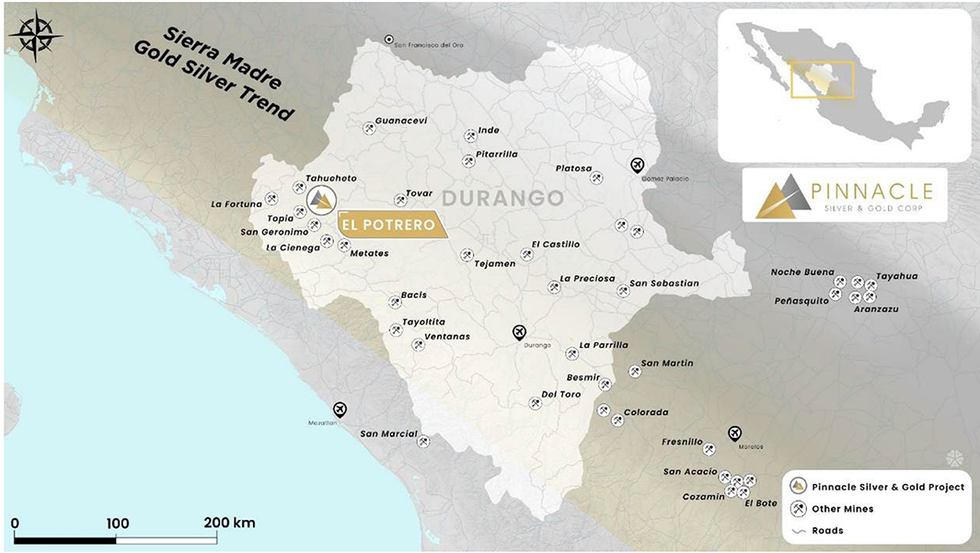
Pinnacle’s current flagship project, El Potrero, is located within the Sierra Madre Gold Silver Trend.
The company's investment appeal stems from several key factors:
- A robust pipeline of projects at various stages of exploration and development
- Strategic focus on high-potential areas in North and South America
- Effective capital management practices
- Aggressive expansion strategy through strategic acquisitions
The company’s business strategy involves the acquisition of past-producing mines that can be put back into production quickly to generate cash flow. By focusing on high-grade, underground mines, Pinnacle can leverage low capex, a smaller operational footprint, easier and faster permitting process and protection against metal price volatility. At the same time, the company conducts brownfield exploration for resource expansion, increasing its potential for district-scale discovery.
Pinnacle's emphasis on creating shareholder value is evident in its approach to project selection and development. The company's portfolio is carefully curated to balance near-term production potential with long-term growth prospects, offering investors exposure to both immediate returns and future upside.
Company Highlights
- Pinnacle Silver and Gold is a Canada-based exploration and development company dedicated to building long-term shareholder value with its silver- and gold-focused assets in North and South America.
- The company’s flagship El Potrero gold-silver project, located in Mexico’s Sierra Madre Belt, has returned exceptional underground sample grades up to 85.1 grams per ton (g/t) gold and 520 g/t silver, with exploration potential across a 1.6 km strike length.
- The 100-percent-owned Argosy gold mine and North Birch project are located in the Red Lake District in Northwestern Ontario, a region famous for gold production and high-grade underground mines.
- The company’s strategy is to generate near-term production from past-producing assets while growing its resource base through modern, brownfields exploration.
- Pinnacle is led by a highly experienced management team with a successful track record in advancing exploration-stage assets through to production.
Key Projects
El Potrero Gold-Silver Project
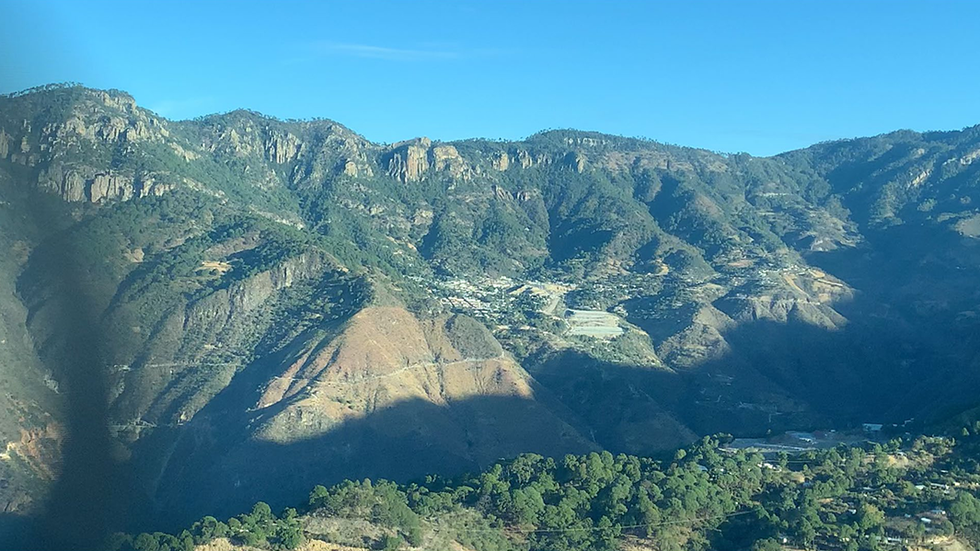
El Potrero is a high-grade, past-producing gold-silver project located in the prolific Sierra Madre Belt in Mexico, within 35 km of four operating mines, including Fresnillo’s 4,000 tpd Ciénega Mine. The project comprises two concession blocks totaling 1,074 hectares, which include the historic mines and a 100 tpd on-site processing plant.
Recent Developments (as of July 2025):
- Over 600 rock samples have been collected from underground and surface sources for geochemical analysis.
- Channel sampling at the Pinos Cuates mine returned assays of up to 85.1 g/t gold and 520 g/t silver over 0.5 m, and composite intervals of 50.3 g/t gold and 269 g/t silver over 1.7 m.
- Geological interpretation highlights a significant quartz-feldspar porphyry dyke as a structural control on gold-silver mineralization.
- The Dos de Mayo vein system has been mapped over 1.6 km with trench and underground samples showing high-grade mineralization, including 13.2 g/t gold and 2,280 g/t silver from surface grab samples.
- Work is underway to design an underground and surface drill program to define continuity and guide future mine development.
- A site inspection of the 100 tpd plant confirmed that the base infrastructure is sound. Refurbishment of key equipment (crusher, mill, Merrill Crowe circuit) is being planned.
- Permitting efforts are progressing efficiently, aided by the site's historical disturbance. Baseline studies and formal permitting proposals are underway.
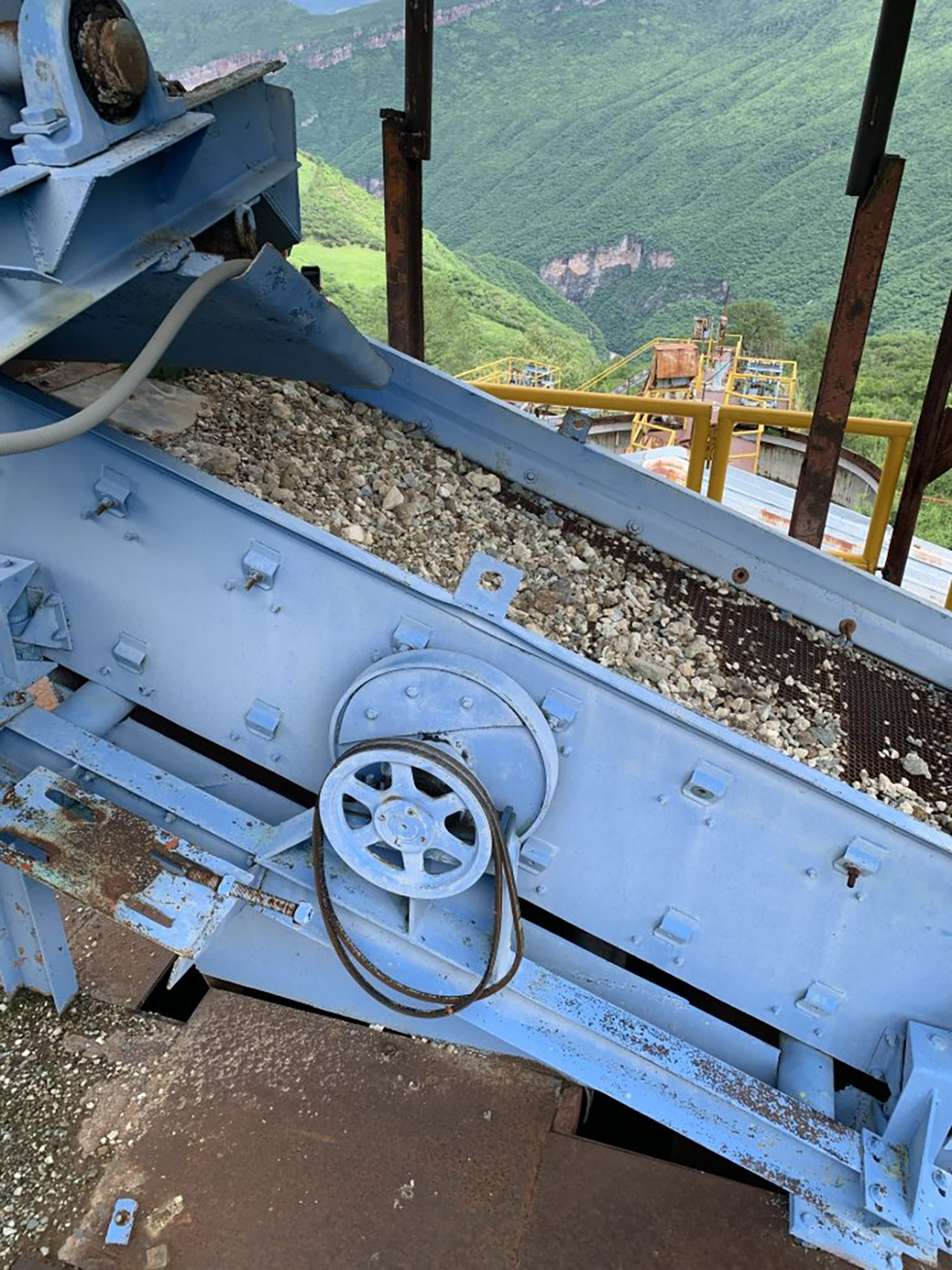
Pinnacle can earn an initial 50 percent interest upon production and increase its ownership of El Potrero to 100 percent subject to a 2 percent NSR, primarily through cash flow-funded payments, offering a low-dilution path to full ownership.
Argosy Gold Mine
Located within the Birch-Uchi Greenstone Belt in Ontario’s Red Lake District, and approximately 10 km from First Mining’s Springpole deposit, the Argosy gold mine produced 101,875 ounces at 12.7 g/t gold from 1931 to 1952. Pinnacle owns 100 percent of the project, subject to a 2.5 percent NSR.
Exploration Highlights:
- Past drilling intersected high-grade mineralization, including:
- 14.67 g/t gold over 1.7 m (No. 3 Vein)
- 12.02 g/t gold over 1.29 m (No. 8 Vein)
- 11.75 g/t gold over 1.55 m (No. 2 Vein)
- The project offers strong depth potential, with 2002–2004 drilling intersecting multiple new veins and gold mineralization extending to 400 m vertical depth.
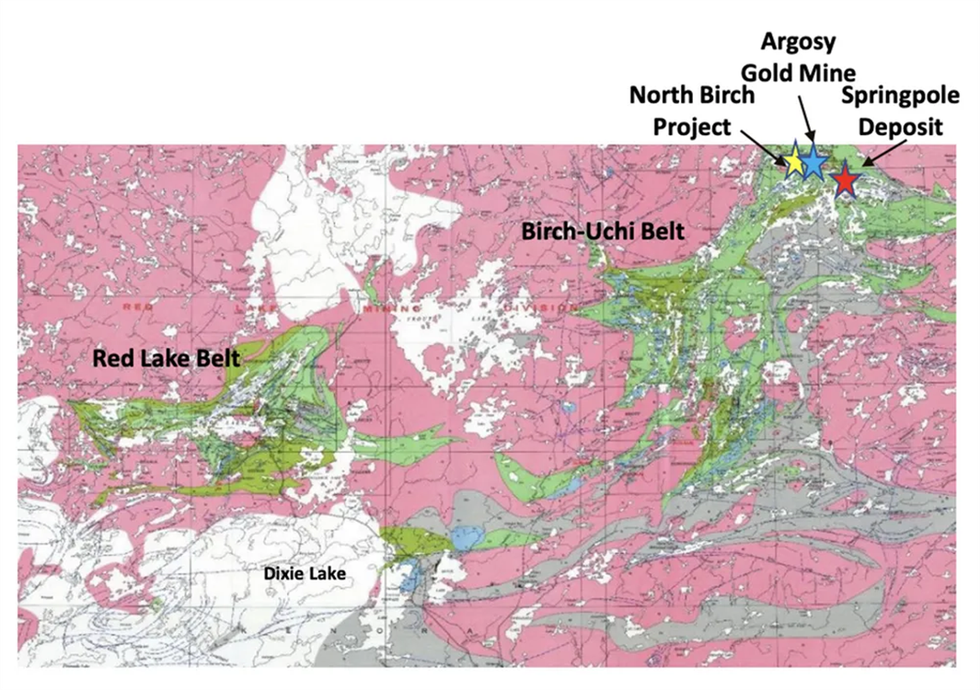
North Birch Gold Project
Located 4 km from the Argosy Mine, North Birch is a 3,850-hectare grassroots project with major upside. The property lies in an underexplored section of the Birch-Uchi Belt and covers a folded and sheared iron formation, interpreted as analogous to Newmont’s Musselwhite Mine.
Exploration Work:
- LiDAR surveys and IP geophysics have revealed 8+ km of structural breaks with multiple drill targets.
- 2022 drilling intersected anomalous gold and copper mineralization within structurally deformed and altered iron formations, confirming the favorable structural setting
Management Team
Robert Archer - President, CEO and Director
Robert Archer has more than 40 years’ experience in the mining industry, working throughout the Americas. After spending more than 15 years with major mining companies, Archer held several senior management positions in the junior mining sector and co-founded Great Panther Mining, a mid-tier precious metals producer, where he served as president and CEO from 2004 to 2017 and director until 2020. He joined Pinnacle as a director in March 2018 followed by his appointment as CEO in January 2019 and president in October 2021. Archer is a professional geologist and holds an Honours BSc from Laurentian University in Sudbury, Ontario.
David Cross - CFO
David Cross is a CPA and CGA with over 21 years’ experience in the junior sector with a focus on finance and corporate governance. He is currently a partner of Cross Davis and Company LLP Chartered Professional Accountant, which specializes in accounting and management services for private and publicly listed companies within the mining industry, and has recently been appointed CFO of Ashburton Ventures.
Colin Jones - Independent Director
Colin Jones is principal consultant for Orimco Resource Investment Advisors in Perth, Australia. He has almost 40 years’ experience as a mining, exploration and consulting geologist in a number of different geological environments on all continents. He has managed large exploration and due diligence projects, and has undertaken numerous bankable technical audits, technical valuations, independent expert reports and due diligence studies worldwide, most of which were on behalf of major international resource financing institutions and banks. Jones holds a Bachelor of Science (Earth Sciences) degree from Massey University, NZ.
David Salari - Independent Director
David Salari has worldwide experience in the design, construction and operation of extractive metallurgical plants. He is an engineer with more than 35 years of experience in the mining and mineral processing field. He is currently the president and CEO of DENM Engineering.
Ron Schmitz - Independent Director
Ron Schmitz is the principal and president of ASI Accounting Services, providing administrative, accounting and office services to public and private companies since July 1995. Schmitz has served as a director and/or chief financial officer of various public companies since 1997, and currently holds these positions with various public and private companies.
Keep reading...Show less
20 August
ESGold Pens Colombia Tailings Project Deal as Global Reprocessing Grows
ESGold (CSE:ESAU,OTCQB:ESAUF) has signed a binding memorandum of understanding with Colombian firm Planta Magdalena to form a 50/50 joint venture on a fully permitted gold- and silver-bearing tailings project.
Under the agreement, ESGold will invest C$1.5 million for its stake and will retain a first right of refusal to acquire the remaining 50 percent interest from Planta Magdalena within 12 months.
The project is designed to replicate ESGold’s Montauban model in Québec, which focuses on generating cashflow by reprocessing legacy tailings, while providing environmental remediation.
Preliminary due diligence sampling of 27 tailings collected from the project, located in Colombia's Bolívar department, returned encouraging results, including assays of 42.7 grams per metric ton (g/t) gold and 280 g/t silver.
Several samples exceeded 5 g/t gold and 190 g/t silver, highlighting the potential for high-grade recovery.
Bulk concentrate tests are underway, with final verification to be completed at Actlabs in Québec.
Bolívar is one of Colombia’s most prolific gold regions, with artisanal miners processing an estimated 300,000 metric tons of ore annually. ESGold, a self-described scalable clean mining and exploration innovation company, plans to apply modern, mercury-free recovery methods to improve yields while addressing environmental concerns.
“The region still processes hundreds of thousands of metric tons of ore annually, yet much of it is handled using rudimentary mercury amalgamation methods that leave behind a substantial amount of gold and silver in the tailings,” said Gordon Robb, CEO of ESGold. “This creates an immense opportunity for ESGold to apply modern, environmentally responsible recovery technology that can significantly improve yields while remediating legacy mine sites.”
Pending completion of technical and legal due diligence, ESGold aims to fast track the project toward production in 2026, establishing a second high-margin operation alongside Montauban.
Green revenue stream
It is estimated that there are 8,500 tailings facilities around the globe, holding more than 217 billion cubic meters of mine "waste." In an effort to reduce the amount of stored tailings and their environmental impact, tailings reprocessing is emerging as both an economic and sustainable revenue stream.
By extracting valuable residual metals, such as gold, copper and critical minerals, from legacy waste, companies can generate revenue while reducing the environmental footprint of tailings facilities.
The approach also aligns with sustainability goals, as it mitigates risks like tailings dam failures and restores degraded sites, turning longstanding liabilities into productive assets
Globally, the growing recognition of untapped value in tailings has spurred renewed interest and investment, with major miners — like Vale (NYSE:VALE) — and governments prioritizing tailings projects as part of circular mining strategies and critical minerals security.
Don’t forget to follow us @INN_Resource for real-time updates!
Securities Disclosure: I, Georgia Williams, hold no direct investment interest in any company mentioned in this article.
Keep reading...Show less
19 August
Shallow, high-grade drilling results continue at Sandstone
Brightstar Resources (BTR:AU) has announced Shallow, high-grade drilling results continue at Sandstone
Latest News
Latest Press Releases
Related News
TOP STOCKS
American Battery4.030.24
Aion Therapeutic0.10-0.01
Cybin Corp2.140.00

